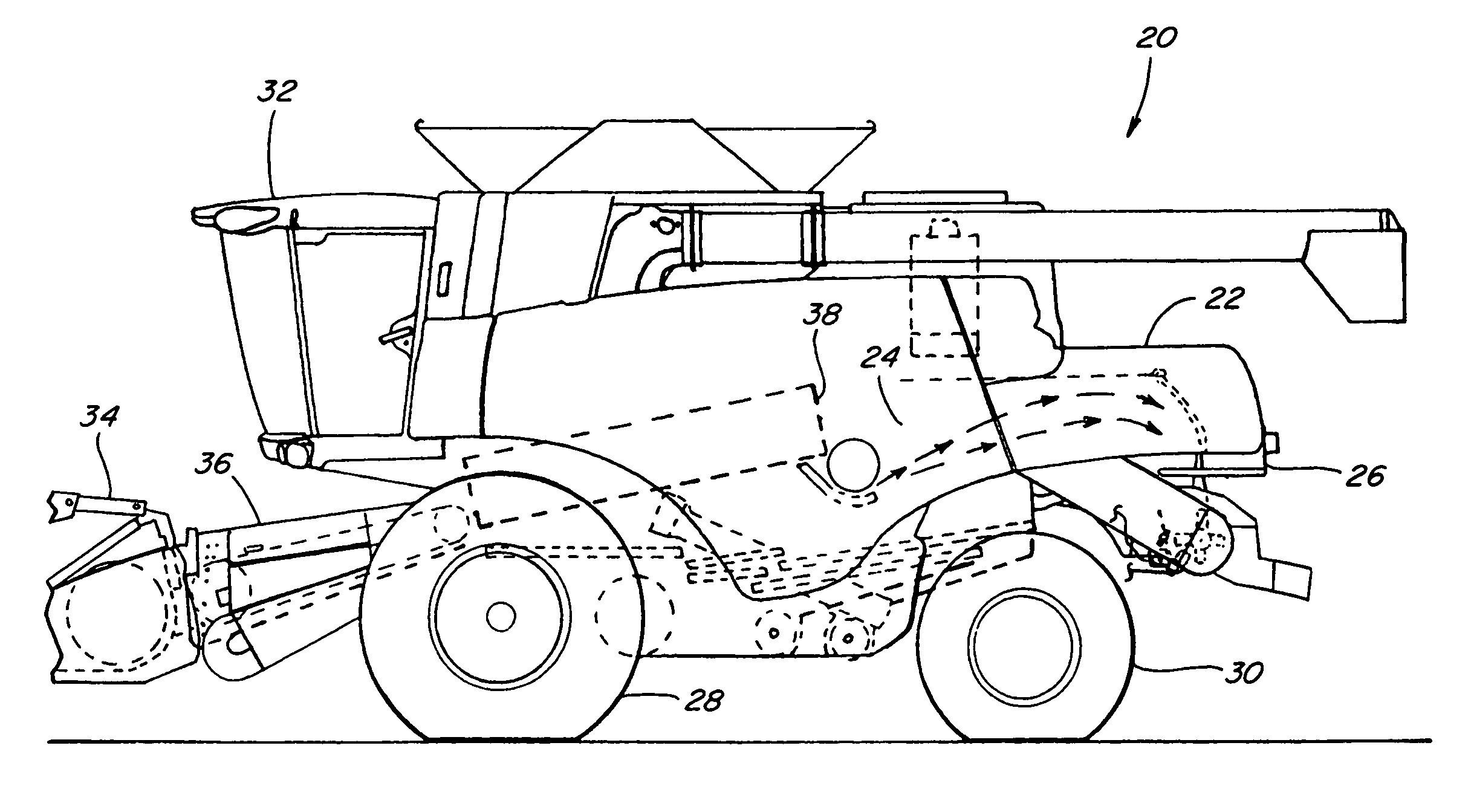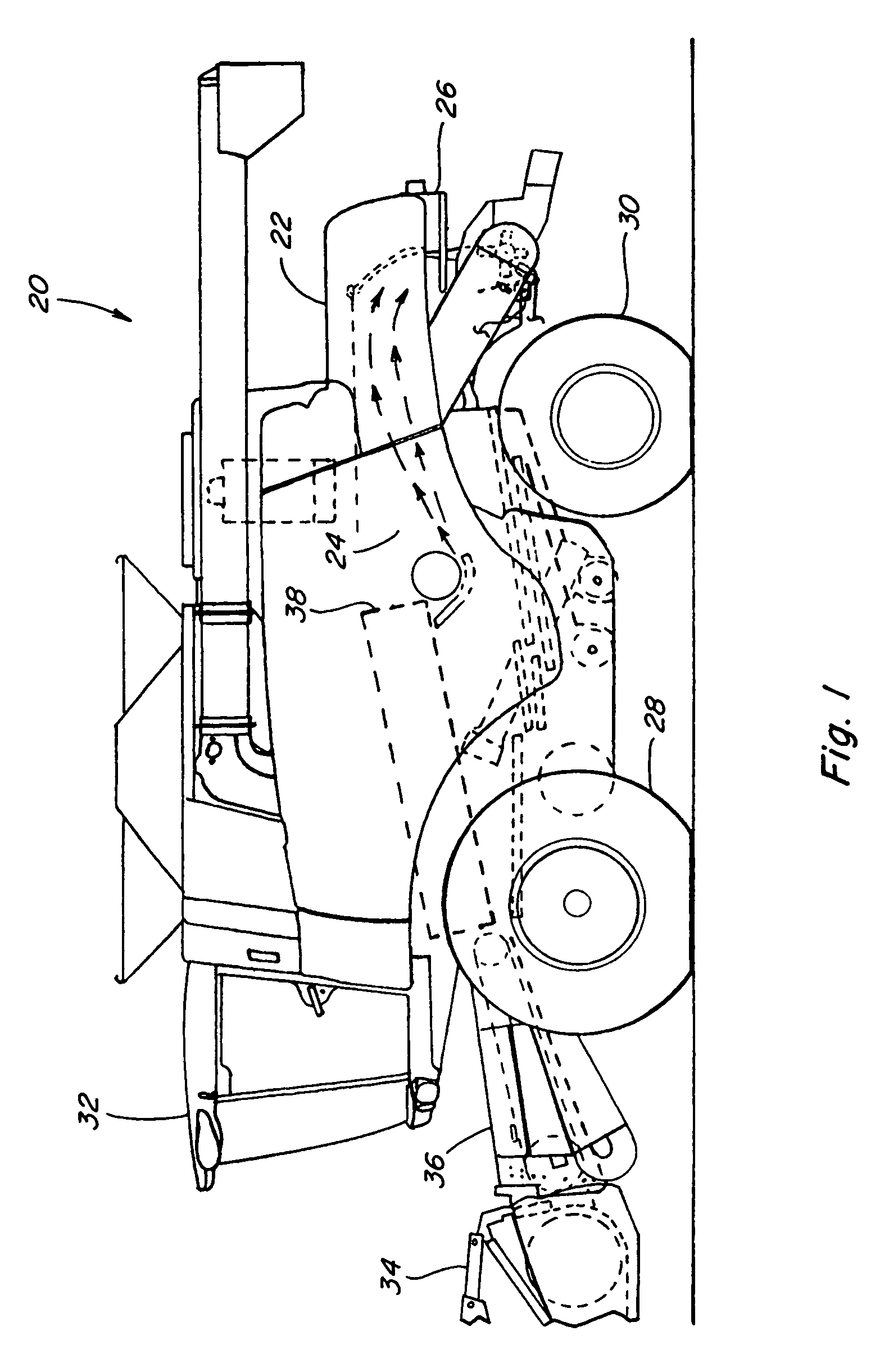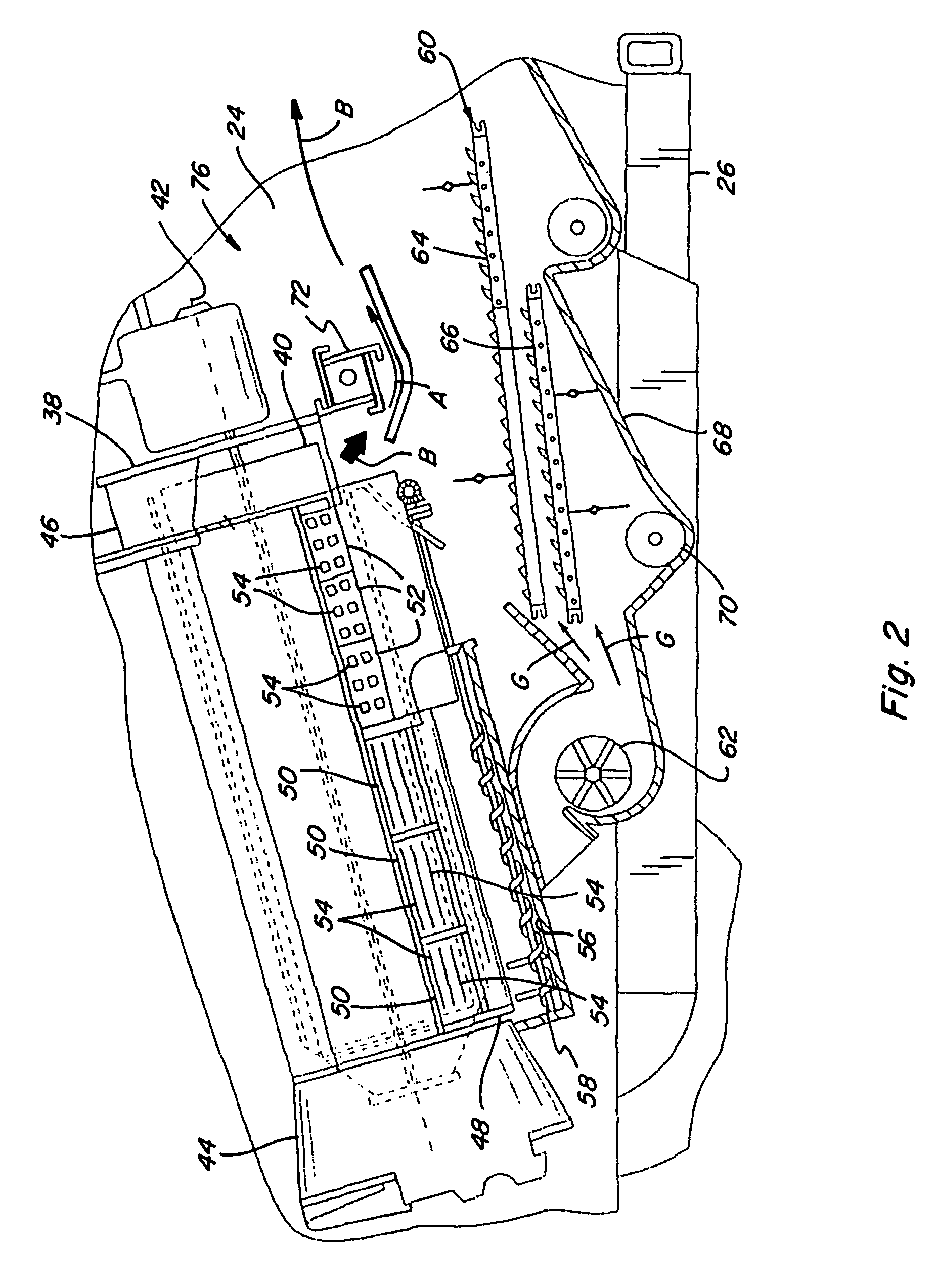Combine harvester power management control
a technology of power management control and combine harvester, which is applied in the field of combine harvester, can solve the problems of operator risk exceeding the capacity of a subsystem, reducing available engine power, and requiring a substantial amount of residual power, so as to prevent damage, failure or poor functional performance, and reduce available engine power
- Summary
- Abstract
- Description
- Claims
- Application Information
AI Technical Summary
Benefits of technology
Problems solved by technology
Method used
Image
Examples
Embodiment Construction
[0039]Referring to the drawings, FIG. 1 shows a self-propelled rotary combine 20 representative of those with which the automatic control system operable for setting a level of maximum engine power according to the invention, can be used. While a conventional rotary combine is shown, it is anticipated that the present invention could be used with any type of combine, such as a conventional combine having a threshing cylinder and separation beaters (not shown) or a hybrid combine having a threshing cylinder and rotors (not shown). However, for ease of explanation, the present invention will be discussed hereinafter in conjunction with a self-propelled rotary combine 20 as illustrated by FIG. 1.
[0040]Combine 20 includes a housing or body 22 defining an internal open area or space 24. The body 22 of the combine 20, which can include a supporting frame 26, is supported on front drive wheels 28 and steerable rear wheels 30. The combine 20 is powered by an engine 126 and controlled from a...
PUM
 Login to View More
Login to View More Abstract
Description
Claims
Application Information
 Login to View More
Login to View More - R&D
- Intellectual Property
- Life Sciences
- Materials
- Tech Scout
- Unparalleled Data Quality
- Higher Quality Content
- 60% Fewer Hallucinations
Browse by: Latest US Patents, China's latest patents, Technical Efficacy Thesaurus, Application Domain, Technology Topic, Popular Technical Reports.
© 2025 PatSnap. All rights reserved.Legal|Privacy policy|Modern Slavery Act Transparency Statement|Sitemap|About US| Contact US: help@patsnap.com



